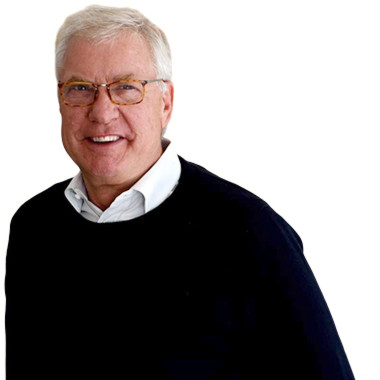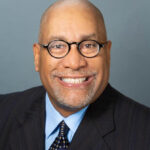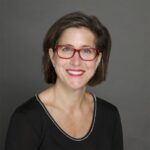{{QUOTE1}}
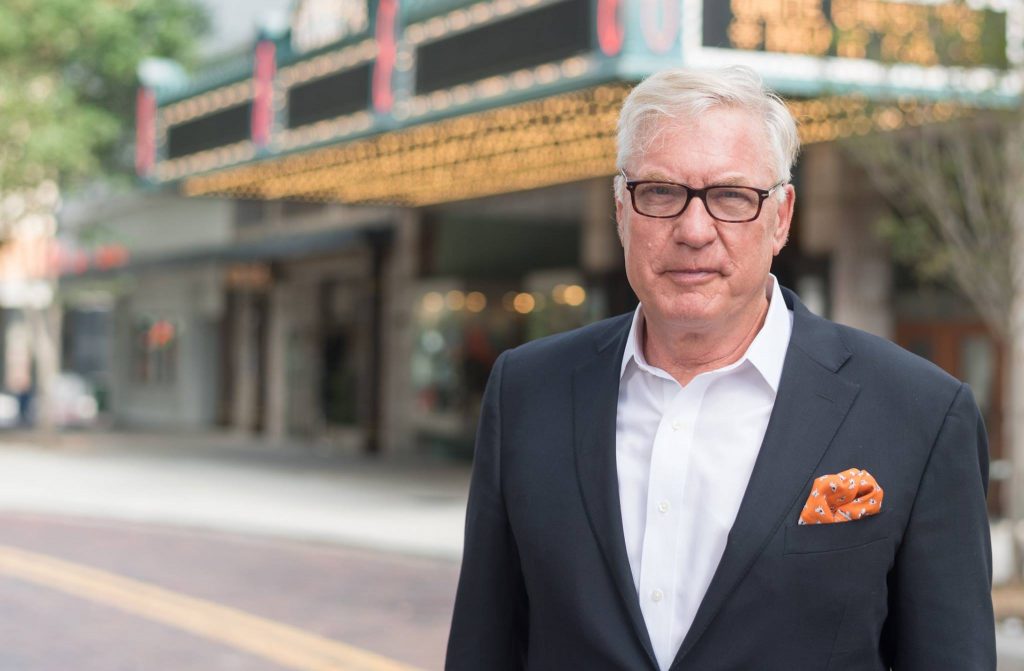
{{QUOTE2}}
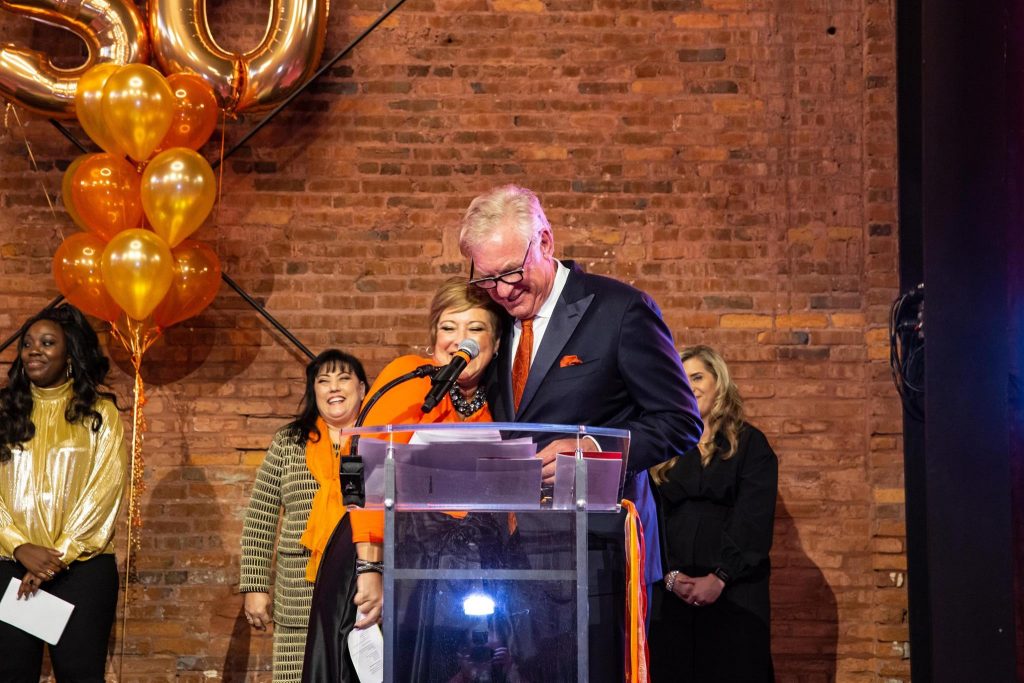
Table of Contents
(0:00 – 00:48) Introduction
(00:48 – 2:55) Major Projects
(2:55 – 4:09) Hotels in St. Petersburg
(4:09 – 6:00) Economic Development: Hindrances and Indications
(6:00 – 7:30) Public-Private Partnership
(7:30 – 9:37) Affordable Housing
(9:37 – 14:25) Motivations for Life and Philanthropy
(14:25 – 18:41) Preserving Character and Uniqueness of St. Petersburg
(18:41 – 19:44) Positive Changes for St. Petersburg
(19:44 – 23:35) Life after Coming Out
(23:35 – 25:23) The High of Real Estate
(25:23 – 26:15) A Look at the Future
(26:15 – 26:43) Shout-outs
(26:43 – 27:21) Conclusion
Full Transcript:
Joe: Joining me on SPX today is the CEO Smith & Associates Realty, Bob Glaser. Welcome, sir.
Bob: Good morning. Welcome.
Joe: He’s also been one of my finer landlords for the last three years, thank you for that.
Bob: You’re welcome. You’ve been a great tenant, enjoyed having you right next door and hearing some of the updates that you’ve worked on also, it’s been fun.
Joe: So, let’s start with the some of the major projects you’ve gone on. I want to come away from this conversation knowing more about the commercial real estate business than I did going into it. So, I’m excited to be able to get some of that from you. I know right now a big project that you’re working on is The One, what’s the update on that?
Bob: So exciting. The One which was a project started about six years ago is now moving homeowners in. So, starting early this month, made a couple of people moved in and by year end, probably at least 40 families will move in and then in the first quarter of next year, the entire building will be all new residents and what’s nice about that is, although a number of them are locally-based moving up from one condo to he next or a house. There’s a lot of folks moving from the East Coast, Midwest and taking residence here, brand-new to the area. I think that’ll bring some neat vitality with having a whole bunch of new people in town.
Joe: One of the things that people always made note of was a high percentage of investor buyers, do you feel like that’s change at all or is it still pretty healthy? I heard a number sized 70% when the early development boom happened.
Bob: Yeah. I mean, it was easier in the early development periods to have an investor cycle, but that went away. So, I would suspect in One only because it takes a bit of time to deliver a building that some people be, for their own reasons health or relationship, may not end up closing.
Bob: But at the most right now, we’re seeing about 12 of 200+ units that may come back to the market and those that were coming back, I believe, are already have people sort of raising their hands interested.
Joe: That’s great.
Bob: Yes.
Joe: What’s makeup of the whole complex, there’s the residential, about how many units, and then what else is…?
Bob: There’s 235 residences total. And on the base, the commercial that you see on central is taken up by office largely, and then that one restaurant. And on the 1st Avenue Northside has just gone up for lease and several of those are already leased so there’s not a lot of commercial in that building. It’s largely all residential. The commercial side of it turns out to be the hotel. Obviously, the Hyatt is integral part of it, so that really became the commercial end.
Joe: What’s your general opinion on as we start to develop new properties, there’s been a few large lots purchased and being prepared for development? What do you think St. Pete needs more of?
Bob: Well, of course we need hotels. I’d love if we get a five-star or at least established a five-star, and perhaps with the recent sale of the Vinoy to the Glazer Group in partnership at $186 million, that will signal opportunity for that to convert over to a five-star resort which helps embody what might be some other hotels mixed into residential developments for two reasons, both that will bring more people organizationally that could be moving their companies here to Tampa Bay. They stay in these properties, they see the market, they enjoy it a little bit differently and say, “I could live here. My company could be here. What a nice place is this.”
Joe: So, you think it’s a viable economic development exercise to start with… you think hotels could actually be a catalyst for…?
Bob: No question. I know – Tampa Bay – we’ve been in the market a number of years and in downtown Tampa, a number the CEOs and the businesses that started all.
Bob: We go back to when that Hyatt was developed and folks were in town and they enjoyed Tampa, they go to a Bucks game and those CEOs years later said, “Let’s move our companies out of the Northeast.”
Joe: You have a healthy commercial real estate presence, what are you seeing and how are you feeling as far as our economic development efforts go? What’s our biggest hindrances and is there anything specific that you’re working on to try to attract more businesses down here?
Bob: We’re largely residential, so the buildings that we’re working on are condos with hotel and/or condos with some retail. On the bigger picture, we’re fortunate in Tampa, we’re partner with Strategic Partners which, with them, we’re working on the Addition Hotel and the condos there. We realized the power of what Vinik and the Gates group is doing their, bringing businesses in. We’ve had several meetings bringing them to visit over here to look at what the Trop could be like because they are here, they’re very viable partner could be for the city. Also, to see how to match up that land into a similar development is going on in those 60 acres in Tampa.
Joe: Was there any early indications of interest that you can share?
Bob: There’s great interest on their part to look forward to what St. Pete has. I would love to see St. Pete in that Trop site and I know the mayor’s got some great plans but what’s important to try to not piecemeal an idea but to put that land in a similar kind of full development cycle – how much affordable housing can get in there, how much community can be in there, how much of a park, how much of a, perhaps a convention center hotel, and then business. How could it serve John Hopkins? How could it serve any of the defense at MacDill? Where there, you’ve got lots of research going on. There’s really not office complexes in Tampa being developed other than West Shore, and it’s pretty well developed out. So, this city has the biggest opportunity right now for commercial growth.
Joe: So that’s complex – to put that vision together. Do you see public-private partnership as being the most viable way to do that?
Bob: It would be. Because you’ve got infrastructure change that has to take place with the roads, and sewer, and lighting. Then you to come up with a fair balance to how do you get the land out of just strictly RFPs to the first person that shows up with the next building and really have a model that’ll work for the city because it’s tremendous to think about the idea that this city has this much land, the most important city on the West Coast, having the beaches, and the bay, and this infrastructure so close by. There’ll be a lot of companies, I think, US would find this a great destination.
Joe: So, assuming that the Trop site was able to be developed to its highest and best use, what do you think happens then to the lands sort of to the west of it and to the south of it, and that whole area stretching down to the CRA?
Bob: To the west, you start moving into sort of the artsy district areas and the arts complexes in those warehouse buildings. I think very much like Wynwood, how exciting Wynwood turned out because the density is still flat. I know related and a couple larger investors have put in a couple condos or apartment buildings in there, and their density allows no more than six stories in Wynwood, and that was through a lot of maturity because Wynwood’s already about 10 years old. So, I would see just still that infrastructure taking time growing over there and eventually people could live within that arts district also.
Joe: And how much should this affordable housing play into…? One, to get the companies down here, being able to house the people that work in those companies, service workers, have you seen good solutions for affordable housing that you think would be good fit for St. Pete?
Bob: So, the first solution which is a question, how affordable it is, but a big solution for this market has been the apartments. There’s about 3,000 apartments in total built today. There’s a few more very large structures coming in, that allows people who live downtown not to have to have a car, they save on that money so they can go right straight to their work, and possibly then afford that apartment.
Bob: But then, we have a need for affordable housing. We really do. There needs to be some of it built wherever we can do on the Trop area or anywhere circular to that, we definitely need some more built.
Joe: Potentially, some out-of-the-box ideas we’re giving, I don’t know how will rent controls work or things like that, but you have market forces even the newer apartments that are coming in are two bedrooms, sometimes over $2,000 a month, which is tough for…
Bob: Yeah, it’s tough to start. So, some of that is based on bond financing, and some ideas that can be interesting to a developer to even want to do it so they get the same return. But the bond financing that can be available through a county or a state would allow more affordable housing.
Joe: So, by giving them cheaper money that they can replace some of the profit they lose by going down on the asking price.
Bob: And then in a lot of cities, there’s so many models already done, and Urban Land Institute has done so many studies on big cities and how to get affordable housing in. I know Tampa had just recently met with a lot of the residential developers saying, “We’re gonna tax. We’re gonna change, which we do.” And they say, “We don’t probably need to do anything because the models were all out there nationally in big cities and many of the buildings where you have typical market-controlled units, there’s also in order to get the zoning, affordable housing at the base or affordable housing mixed in a part of it. So, it’s already granted within most properties and so there’s good examples to follow for this city.
Joe: You’re a very philanthropically active, what moves you the most in that realm?
Bob: The company was born philanthropic, I guess, to that extent. Fortunately, Mary Smith Conover, one of the first things she started was a group that worked with USF and she was trying to help bring USF a little closer to the community. Although that wasn’t necessarily bringing everybody up. It was beginning to bring a university into the market and helping the students build some opportunities.
Bob: And this goes back 40+ years. So, the school is developed in the 50s, Milo Smith, her husband was the urban planner, they did a lot of that work. So, the company sort of always had that lifestyle to it. I didn’t know about it because, gosh, I came from starting real estate, driving my Falcon around, and I could barely put gas in it. I move from upstate New York to into a double wide trailer into USF and into real estate. So later in life, when we could with the family and with the company, we’ve always set a certain amount aside yearly to get back into the markets and that really grew because I’m here, I’m easy to get hold of, some days. As part of that, we feel it so important, whatever we could do. It’s great to sell homes, it’s great to bring people new to these markets, as we do in like this new building One. But isn’t it just as nice to make sure Bob Devin Jones’s studio 620 is being viable, that he can create Shakespeare in the park for free, and give everybody a place to see and folks to have their arts abilities be exhibited? So, we realized the balance really is about making a community. And to make a community, you gotta give back.
Joe: So, coming from the era of the Falcon and the era of double wide, the experience of wealth is relative, right? It’s relative to where you came from. You’ve been very successful, but yet you still have a large drive and how attached is that to the actual financials or how attached that is to just the love of the work or just general operating in the city and all that it affords you? Can you kinda talk about what drives you on a day-to-day basis?
Bob: I think it when you own a business, and now as long as I have, you’ve got a core of people that worked with you for years, you have somewhat of an obligation to make sure you’re caring for them in salary and pension and health. Then you’ve got a team of people and agents maybe more independent that have grown to expect as an umbrella company that you would build and deliver and develop so they also can make a living.
Bob: As that cycle continues for us over all these years, I’m, of course, in love with it. In my whole statement with the team is, “We are out there to help individuals every year find their home. We do what we love and because we’re doing what we love, we are paid well for it.” Certainly, we’ve been through three big cycles in real estate and have done whatever we could in order to stay in the industry and keep the business running, but be on the financials, which I can read quickly but I keep my hands off of. I just focus on the units that we sell which is about 2,600 years on the residential side and then on the development side, it’s just a matter which buildings were in the middle of closing. That work motivates me. I love working with the consumer and seeing they’re getting into a house. I love a little bit even more now have in this opportunity to work these developers. And with the developers most recently like John Kessler Titus and their family with the 400 block in Central helping build what is for tomorrow and being able to have input in knowing whether we’ll be there forever. And if we can give the best input possible that we’re helping deliver the best product to the city.
Joe: That stretches beyond just simple service. The real estate needs actually shaping St. Pete going forward which is nice. Because the real estate things you mentioned as far as serving your team and serving the community, you’ve stretched beyond that. You’re really pushing this year into some pretty large partnerships with development and actually, really, the biggest of all the people who are doing developments you seemed to be connected with now, that’s gonna be nice.
Bob: Two days ago, we opened up Riverwalk Place in Tampa and that’s a building designed by Gensler out in Shanghai. So, it’s probably the most iconic building will be built in Tampa Bay, tallest, certainly. We are going to have to really pull our bootstraps up to get this done because we got about 120 people to get in there before we can start.
Bob: But I always look at all these opportunities like that’s a vertical neighborhood to new vertical neighborhood of about 280 homes being built. And once you can aggregate that group that wants to join that neighborhood, and you think about it, with condos you’re a little bit more environmentally friendly because both air conditioning and green and services and you’re also gonna be positioning them where people won’t need cars and really obviously helping create some of the future.
Joe: Can you share your feelings on preserving the character of St. Petersburg. Obviously the One is beautiful but it’s tall and it’s a big, and there’s been some effort lately to preserve some of this – the businesses on Central Avenue and obviously, there’s a natural gentrification that happens with just simple evolution, but what do you we think we need to concentrate on in making sure we preserve the uniqueness of St. Pete?
Bob: Part of the gentrification is, of course, if building’s coming in just like Relate It, built on Central in the 800 block, naturally the historic building was saved, the Union Trust building, but in conversation with them. Also, through their experience, they decided to clad the building to look like Union Trust building. So as an apartment developer, they didn’t may have to do any of this work but they built a block building tall. They opened the courtyard in the Central so the pool looked on to Central Avenue. They clad the building with the same 1920 clad that’s on the Union Trust building. So, it looks older. So, part of that is encouragement. Now they can afford to do it, but part of that’s encouragement to these developers where you can get a block and do that kind of work. Pretty much all the blocks are gone, I don’t think you can do another block other than Kessler Titus’ right now. There may be one other but you could never do anything of the size they have. Then the next piece with a beautiful site like that is working with the developer and architects and however we clad then parking decks. So architecturally, they feel like they’re in the community versus just standing up in front of you. I know they’re gonna be very sensitive to that also.
Joe: So small shops that are in the 600 block of Central and up through there, a lot of these are little standalone businesses that could go and make a block available.
Bob: I think that change is likely in time, but it’s probably not a condo so then it’s an apartment. And then if it’s an apartment, it’s gotta be 300 units to be viable. I think we’ve just seen the saturation of multifamily in the city already.
Joe: Interesting.
Bob: You got where the world liquors used to be. You’ve got two really big buildings going up in there that are apartments, and that was all vacant land short of that cute World of Liquors building. I’m glad they saved something like the ball in it or something, the world, which they saved the beer bottles on the exterior. But anyways, that really saturates the market. And then, if you’re opening the Trop site at the same time, then you’re gonna allow the multifamily to go into there.
Joe: So, with that, then it sounds like we may sort of bulge a little bit in saturation. I always look it in St. Pete, I call them, they’re sort barriers, right? 34th Street, 19 is a barrier. I thought 5th Avenue North was a barrier to get up 4th Street, which were slowly with Suzu and so they’re starting to cross that barrier. Do you see developments in 10 years or is it busy and connected all the way to the beach? How long is it gonna take us to get past 19 on Central?
Bob: That’s interesting. I mean, I love to bike up there for dinner. When I was driving back 1st Ave. South the other morning from Pasadena, looking at the housing stock on the left side which is really the commercial side and it’s mostly 800 square-foot homes that are quite aged, so I suspect with the city, and I’m not quite sure how dense that zoning is, but it becomes a really good area for supporting commercial. So independent businesses either buying those homes for their own businesses, and I think then that takes years before you see any big gentrification.
Joe: I think I like the area that’s kinda over behind 3 Daughters and between the Morean Center. And you’ve got the… what was on Gina Central that’s gonna be a distillery and Brocante and even a nice little stretch where there’s CrossFit9 back in there. I think all that area will, my opinion, is that’ll be the hip area to be in a few years. It’s sniffing at it now.
Bob: It will be. There’s been them a number of developers in the market place. I mean, one of the early folks that walk through that, we had spoken to briefly. We haven’t been involved selling anything but just sort of guiding them into the market when he first got here was the Goldman family from Wynwood. They love St. Pete because they felt like it’s a little bit more family and a little bit more calm from Miami and the work they did there. And they’ve gotta, of course, a really big sector of the market in New York City that they developed years ago. But they see what you just described. Wouldn’t that be neat with the art and little bit of housing and people live here. For them, it’s some long-term work that they love to do, too.
Joe: What do you think St. Pete needs? What do you think you wish that someone would come in and beyond the obvious of Vinik doing the Trop but anything that’s a little bit outside the box, you think that’s what St. Pete needs?
Bob: Not necessary outside the box. I think it’s more of really in our face and that is, of course, transportation. As much as we can do to make it easier for folks not to have cars and be able to get to different segments of the market like into… Can they live downtown here and get to Raymond James Park up there where there’s 30,000 more employees? Is there a good bus system and other routing so we can reduce traffic and 4th Street’s pretty crowded now from time to time. And then I think more importantly for a lot of, when we talk about families, then we talk about schools. What are we doing for our schools in helping bring up our neighborhoods that surround the city? And encourage a little bit more input from the business community to help the school systems and really show some dedication to the communities both South of the city and any the fringe schools that surround the urban core.
Joe: So, it’s been about 12 years since you came out and can you talk about that experience and how it was then and how it is now?
Bob: Sure. 12 years ago, I made the decision while being married with three kids in Tampa, pretty well embedded in the community, in Gasparilla and leading in a lot of the not-for-profit work and so it was a little testy, saying this is who I really am. Very fortunate for me I have a loving wife and children that stuck by me and best of friends forever. But I made a decision probably is part of that change I decided to move to St. Pete and step out of Tampa just a bit and not be at the forefront and give everybody a little bit of a break and myself also to better understand this new change in me. So, moved to St. Pete and I said, I’ll stand back a bit not get involved. But it wasn’t long before I got back involved in the Morean Arts Center and got to know the community and felt really comfortable as a gay man. I had a partner that time for seven years and then moved onto another great man Craig Wright for three years and Craig had decided I should…that we might want to buy a farm which we ended up owning a farm out in McIntosh Road in Tampa because he had a background in Clydesdales. As Craig left this earth a year ago in June, we ended up with 18 acres, a pregnant Clydesdale and I looked at the family and said, “Are we going forward with this or not?” They said, “Let’s go forward.” Because his idea was, “What about doing something with Make a Wish or doing something with kids with the Clydesdales?” And focusing a little bit less energy on those thoughts of real estate which I seem to have and get towards the land and do some more things for the family that might be a little bit different. In the last year, we’ve built a barn. Through the universe, we’ve acquired through a connection through another man that had an equine therapy farm, who’s also suffering from cancer and before he leaves this earth, he wanted to make sure we had his horses, his wagons, and his ability shared. So, we have a barn with five Clydesdales in it and by January in the full moon, we think we’ll start a program that will be equine therapy that will affect autism kids, hospice and maybe some folks with addictions.
Bob: So, you just don’t know where all of life takes. I mean I had a wonderful experience. When I mentioned being in a maverick, in a mobile home, and growing into the markets and having a wonderful life with a wife and three kids and then being able to be who I really am.
Joe: There’s quite a journey in that answer. So, when you moved to St. Pete originally then you sort of have a reset and there’s a lot of unknown about when you come out. Was the reality of it, did it live up to any fears or concerns that you have or was that not as stressful as you thought it would be?
Bob: Of course, leading into it, I was completely stressed because I thought, how do you explain that? Because I guess you have to explain it, but I think that’s part of being repressed so long, you have this little bit less value of yourself because you can’t be honest when you hold all those things in so just being able to let everybody know who I was, was so nice to be able to be free of that lie.
Joe: The process of self-actualization. I think people sort of call it the shoot out of their youth; it’s sort of like a cannon shot, right? All the values and meaning, this is what you’re supposed to do, the wife and the three kids and whatever. Then at some point you check all the boxes, and you realize that nobody’s even watching if you’re checking the boxes anymore. And then you’re kinda left with yourself and that’s where some people either say, “I’m gonna make second-half my life me which is the real me.” Or other people either crack or just gonna ride it out and suffer. You’re one of the lucky few that made it through that.
Bob: Yup.
Joe: One of the aspects of real estate that I would assume is attractive is it’s a high action. There’s deals, and sales, and opportunity happening all the time. A lot of the deals could be potentially time-sensitive where a great property comes available and who’s gonna be the one to get it. So, when that gets sort of burned into your DNA over X number of years, and then you go to try and slow down and have a farm, is that even possible?
Bob: No, because I’m trying to figure out how to acquire the land next to the farm.
Bob: Because we don’t have enough land. “I think we should have more land.” I said, “Let’s try to get both sides of us and keep growing.” Interesting. I think it’s a great question. When I do get out there with the horses, you can shut down. I cannot be out there too long because it is country and I’m an urban guy, but with best of both worlds, I can drive 40 minutes and be on this land under 110 Grand Oaks with some Clydesdales walking and then I can be back at Bliss overlooking Beach Drive and taking a walk down there and having a tea and biking down the sidewalk and hearing the bands. It’s like, I’ve got it. Perfect. And then, if I stop in the middle, I’m in Tampa which we will certainly soon when Water Street opens.
Joe: You thinking about getting a place there, too?
Bob: Oh, gosh, yes.
Joe: I will note that when you talked about the farm, it went from we have a Clydesdale, and within three seconds you’re like, “We have 18 Clydesdales, and a barn, and some wagons.”
Bob: Yeah, I don’t sit well.
Joe: What’s the longest you’ve gone without your phone?
Bob: 24 hours.
Joe: Have you?
Bob: Well, it’s just in Portugal recently. I made a deal with the guy who I was traveling with. I said, “Let’s turn these things off.” But then I figured, you got him for your photography so you gotta have it with you. But I did leave it off for one day.
Joe: I don’t think it counts if you’re in Portugal.
Joe: Let’s talk about the future a little bit. In our earlier conversation, you talked about some of the larger – you have some big connections that you’re making and potentially shaping some and being part of some large initiatives. What do those look like?
Bob: Timing. I mean, timing for any of the development cycles up to our Mayor and his team with their own negotiation with the building as it exists as a Trop or whether some land might be released prior or however, that might work with a raise that something that he’s only… holds as his cards. But I think as quick as we can put our hands around 80 acres in this city, then that’s what the whole future is about here.
Bob: How fortunate with the opening of John Hopkins area of research and how big that is for here and how willing they are to look at other opportunities because of that, the city is really at the cusp.
Joe: Wonderful. So, we end each show with a shout out. That is, you can give some love to somebody in the city who’s doing something great.
Bob: Well, I would like to give a shout out to Ms. Katie Tully and Helen Levine, who last night dedicated a gallery of art over there in our Arts Xchange district. And again, by giving their love their money, their interests, and support in bringing people together, I congratulate them and thank them for all they do.
Joe: Wonderful. Thank you for your time.
Bob: Yup.
